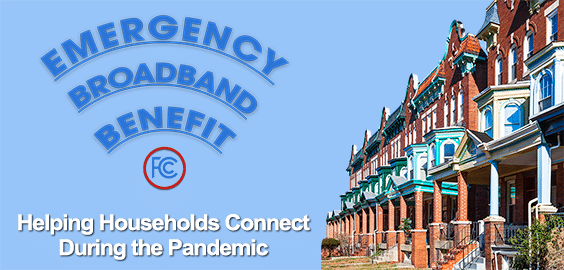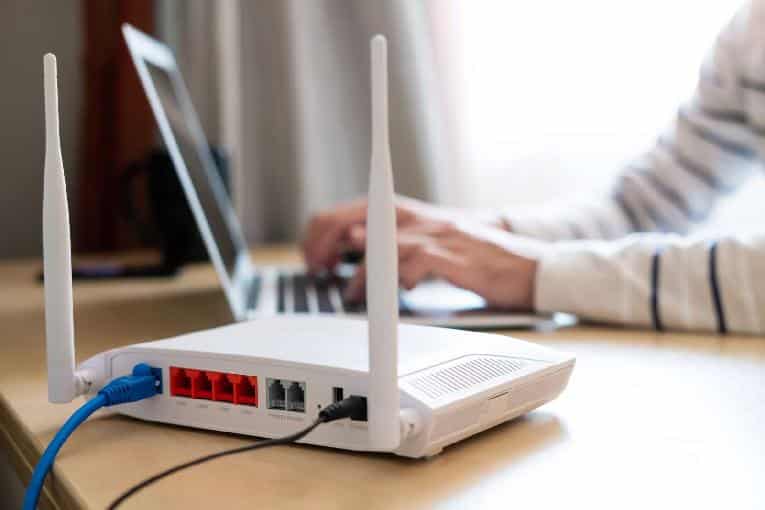*For many people, anything that includes the words ‘free’ or ‘low-cost’ is something worth knowing and taking advantage of, depending on the item, service or situation in question.
With Covid-19 present and lives and routines changed by the medical circumstance, anything having to do with an easier time handling expenses had seemingly been exposed to the cost-conscious public, including free broadband internet service.
Enter the federal government, which stepped in in mid-May to make broadband connections free, via the Emergency Broadband Benefit (EBB), a helpful nationwide effort from the Federal Communications Commission (FCC) that provides needed assistance families and households struggling to pay for internet service during the pandemic.
Referencing the state of California, the Los Angeles Times reports dozens of internet services providers across the state aligned with the program, which covers as much as $50 of the monthly cost of an internet connection (or up to $75 on tribal lands). In addition, a one-time $100 discount on a computer or other device is authorized by the program, a major upgrade over the FCC’s Lifeline program, which provides only $9.25 a month. In comparison, The Times cited the broadband trade association, USTelecom, which computed the average cost of the most popular broadband connection at $48 a month.
In August, the FCC announced that more than 5 million households enrolled in the EBB, since its launch in mid-May.
OTHER NEWS ON EURWEB: Tiger Woods Says His Kids Are Helping Him Through Recovery After Near-Fatal Car Crash
 Despite the milestone, there were still people who were unfamiliar with the Emergency Broadband Benefit. With that, the question lies with why more people aren’t informed about something that can help a lot of them. Recent data, going back to September, revealed about 20% of the households in California (732,201 households), are likely eligible for the EBB.
Despite the milestone, there were still people who were unfamiliar with the Emergency Broadband Benefit. With that, the question lies with why more people aren’t informed about something that can help a lot of them. Recent data, going back to September, revealed about 20% of the households in California (732,201 households), are likely eligible for the EBB.
Adding to this is a survey of low- and lower-moderate-income households, which found that only 25% had heard of the Emergency Broadband Benefit. Speaking with The Times, John Horrigan, a senior fellow at the Benton Institute for Broadband & Society, shared his thoughts on folks not knowing about the EBB, stating that one reason for the low percentage is the government providing no funding to get the word out about the program and reaching out to prospective units.
As a result, publicizing the EBB has been an uphill battle. Announcing the 5 million household enrollment milestone in a press release, the FCC also pointed out new outreach efforts that included demographic information, such as age breakdown, eligibility category, type of broadband service, and enrollment numbers by five-digit Zip code area. Internet service providers added to the outreach, saying they’re promoting the new subsidies on their websites and through social media.
Despite efforts, the messages looked to fall on deaf ears for people who have little or no access to the internet.
For more information on the Emergency Broadband Benefit, including the broadband providers participating in the program, click here. Eiigible new, prior and existing customers of the participating providers can sign up for the EBB by contacting the provider, enrolling online by clicking here or signing up via mail. For details on a mail-in application, call (833) 511-0311.

EBB enrollment information by state and zip can be seen here. Details are below, via the Los Angeles Times, on how to qualify and sign up for the program as well as when the EBB may end:
Who qualifies?
The FCC’s website lays out a number of ways to qualify based on your income or COVID-19-related hardship:
- Your household income is no more than 135% of the federal poverty level. In California and most other states, that translates to about $17,400 per year for a single individual or $35,800 for a family of four.
- You or a dependent are enrolled in at least one of the major federal safety net programs, including food stamps, Medi-Cal or tribal assistance.
- You earned as much as $99,000 as an individual or $198,000 as a couple, but your household lost substantial income during the pandemic because of a layoff or furlough.
- A member of your household received a federal Pell Grant for college in the current award year or qualified for reduced-price school lunches in the current or two previous school years.
- Your household is eligible for an internet service provider’s discounted broadband service.
- Each household can obtain only one discounted broadband line, however.
How do you sign up?
According to the FCC, participants in the Lifeline program can apply for the Emergency Broadband Benefit through their internet provider. The same may be true for people enrolled in an internet provider’s discounted broadband plan.
For everyone else, the first step is to go online to apply for benefits or to get a copy of an application to mail to the FCC. The application will ask you to provide some identifying information (e.g., your Social Security or driver’s license number), attest to your household size and income level, and indicate whether you suffered a COVID-19-related income loss or are enrolled in certain federal safety net programs. You’ll also need to back up your application with documents, such as a statement of benefits or a tax return.
Once you’ve been approved for the subsidies, you’ll need to find an internet provider that’s participating in the program. The FCC website has a list that you can search by ZIP Code or city. From there, you’ll need to call the internet provider and sign up. Different companies impose different fees and restrictions (such as monthly data caps) on their broadband accounts, so be sure to compare the offerings from local phone, cable TV and wireless companies.
The FCC won’t tell you which companies are also providing discounted computers, tablets or other devices you could use to browse the internet.
… A number of carriers are instead applying part of the monthly discount to the fee they charge for modems or routers.
Once you’ve gotten approved and signed up for service, the government will pay the subsidies directly to your broadband provider.
When will the program end?
The federal government launched the Emergency Broadband Benefit in May, intending to run the program until the $3.1 billion provided by Congress ran out. So far, $600 million has been claimed; with about 6 million households participating, it would take roughly eight months to spend the remaining $2.5 billion if no one else signed up.
Congress may give the program a longer runway, however, while also reducing the subsidy amount. The bipartisan infrastructure bill awaiting final action in the House includes $14.2 billion for the effort, which would be renamed the Affordable Connectivity Program and allowed to continue indefinitely.
The subsidy would be reduced to $30 a month, but internet providers would be required to let you apply the subsidy to any tier of service — potentially opening up lower-cost offerings to you.
Internet providers would also be required to collaborate with nonprofits and public interest groups on public awareness campaigns to increase participation by people who don’t already have broadband. McPeak said that enlisting the help of trusted members of the community is key to closing the digital divide. And Horrigan said research shows that “low-income households trust internet service providers less than libraries or nonprofits.”
We Publish News 24/7. Don’t Miss A Story. Click HERE to SUBSCRIBE to Our Newsletter Now!





